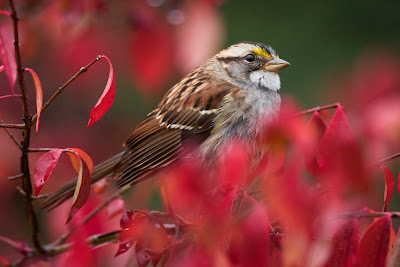Reputation is everything.
It’s been my observation that people don’t like the European
Starling or enjoy having him around. In his defense though, during the winter
molt, he looks pretty good.
There is little doubt the European Starling’s introduction into
America was a disaster, but he is here to stay. There are 150 million European Starlings in the United
States.
All those starlings can be attributed to Eugene Schieffelin. As president of the American Acclimatization Society, he released
60 European Starlings into New York’s Central Park in 1890. His aim was to introduce the city to every
bird mentioned in the works of William Shakespeare. The European Starling was his success story. From those 60 birds we now have 200 million across
North America.
Labeled a noisy nuisance, an agricultural pest, and the reason
for the decline in native songbird species, they have a reputation problem. Flocks of thousands are a hazard to
aviation. Their droppings are a health hazard, contaminating water supplies. They’re
aggressive around feeders and nesting sites. It’s the European Starling you see strung out on rural
electric lines this time of year, although the much larger Rock Dove (pigeon)
also congregate on power lines.
The European Starling is classified as a songbird
(passerine), but musical he is not. Their songs and calls are described by experts as a list of
negatives including high, thin slurred
whistles, harsh rattling, wheezes, piping notes, overall a mushy, gurgling,
hissing chatter.
That isn’t a glowing assessment of his singing ability. Rightly, he doesn’t sing for us. He sings for other European Starlings and
they seem to appreciate it.
Although long on shortcomings, he’s not a boring bird. Striped and spotted, shiny and dull,
light and dark, multi-colored and ubiquitous, he invites closer inspection. Even
molting juveniles can look interesting…at least fuzzy.
The American Acclimatization Society’s goal a century ago may
have been misguided, but their admiration for this bird was understandable. Even with all his undesirable traits
and the negative impact he’s had on his new homeland, he’s still an interesting
and colorful bird.
This one was
hacking-up small indigestible bits on a sunny Mequon morning.
Repairing the European Starling’s damage to the environment would
be an impossible task after 120 years on the loose, but he still has his
admirers. His reputation just
needs some polishing.
Allan


















































